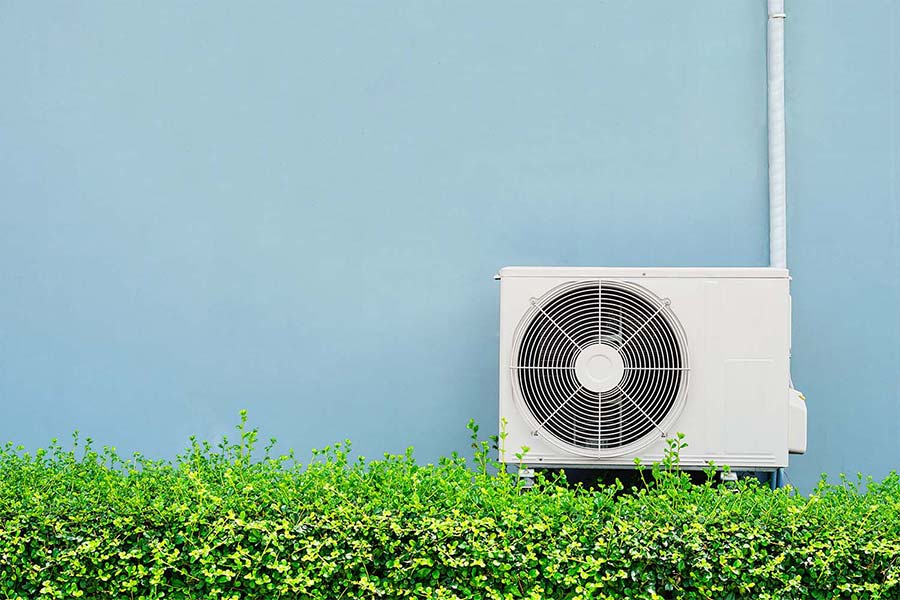1. What is a Ground Source Heat Pump?
A Ground Source Heat Pump (GSHP) is a renewable heating and cooling system that uses the stable temperature of the earth to provide energy-efficient climate control for buildings. It transfers heat from the ground into a building during winter and reverses the process in summer to cool the building.
How it Works:
- Ground Loops: Pipes buried underground circulate a mixture of water and antifreeze (or another heat transfer fluid).
- Heat Exchange: Heat is absorbed from the ground and transferred to the heat pump.
- Compressor: Inside the heat pump, a compressor raises the temperature of the collected heat for distribution.
- Distribution System: The heat is distributed to the building via radiators, underfloor heating, or a fan coil system.
2. Types of Ground Source Heat Pumps
There are two main types of GSHP systems, based on how the ground loops are installed:
Horizontal Loops
- Shallow trenches (1-2 meters deep) are dug to lay the pipes.
- Suitable for properties with large open spaces.
- Lower installation cost compared to vertical systems but requires more land.
Vertical Loops
- Boreholes are drilled 50-150 meters deep.
- Ideal for properties with limited outdoor space.
- Higher installation cost due to drilling but uses less land.
3. Benefits of Ground Source Heat Pumps
- Energy Efficiency: GSHPs use 1 unit of electricity to produce 3-4 units of heat, achieving efficiency rates of 300-400%.
- Renewable Energy: Utilizes heat from the ground, a renewable and sustainable source of energy.
- Lower Operating Costs: Though installation is expensive, GSHPs reduce energy bills over time.
- Reduced Carbon Emissions: Replacing fossil fuel systems with GSHPs significantly lowers your carbon footprint.
- Durability: The ground loops can last over 50 years, and the pump itself can last 20-25 years with proper maintenance.
- Versatility: Can provide both heating and cooling.
4. Installation Process
Step 1: Feasibility Assessment
- Conduct a site survey to assess soil type, ground temperature, and space availability.
- Evaluate heating and cooling needs of the building.
Step 2: System Design
- Decide between horizontal and vertical loops based on land availability.
- Design the distribution system (e.g., underfloor heating or radiators).
Step 3: Groundworks
- For horizontal systems: Dig trenches and lay the pipes.
- For vertical systems: Drill boreholes to install the loops.
Step 4: Connecting the Heat Pump
- Install the heat pump unit indoors (e.g., utility room or basement).
- Connect the ground loops and the building’s heating system.
Step 5: Commissioning and Testing
- Fill the ground loops with the heat transfer fluid.
- Test the system to ensure proper operation.
5. Maintenance of Ground Source Heat Pumps
GSHPs require minimal maintenance, but regular checks can extend their lifespan and maintain efficiency.
Routine Maintenance Tasks
- Check the Ground Loops: Ensure there are no leaks in the system.
- Inspect Heat Pump Unit: Check for any unusual noises or performance issues.
- Clean Filters: Clean or replace air filters in the heat distribution system.
- Fluid Levels: Check antifreeze levels in the ground loops and top up if necessary.
- Service by a Professional: Schedule an annual service with a certified technician.
6. Costs and Financial Incentives
Operating Costs
- Depends on the size of the system and local electricity rates, but GSHPs generally reduce heating bills by 30-50%.
Financial Incentives
- Many governments offer incentives, grants, or tax rebates for renewable energy systems like GSHPs. Check local programs for details.
7. Pros and Cons of Ground Source Heat Pumps
Pros
- Highly efficient and eco-friendly.
- Provides both heating and cooling.
- Long lifespan for both the heat pump and ground loops.
- Low running costs over time.
Cons
- High upfront installation costs.
- Requires adequate outdoor space (especially for horizontal systems).
- Installation can be disruptive to landscaping.
8. Is a Ground Source Heat Pump Right for You?
GSHPs are ideal if:
- You have space for ground loop installation.
- You plan to stay in your property long-term to recoup installation costs.
- You want to reduce carbon emissions and take advantage of renewable energy incentives.
- You are replacing an outdated or inefficient heating system.
9. Conclusion
Ground Source Heat Pumps are an excellent investment for eco-conscious homeowners seeking an efficient, long-term solution for heating and cooling. Though installation costs are high, the environmental benefits, energy savings, and government incentives make them a compelling choice for sustainable living.
Feel free to ask if you need specific details about installation, financing, or system performance!
